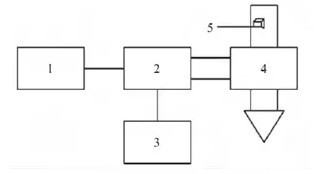Research Progress in Microwave Drying of Fruits and Vegetables

Absrtact: The drying principles and shortcomings of microwave drying and synergistic drying methods are expounded. Low-frequency ultrasonic drying method has the advantages of low drying temperature, high drying efficiency and high quality of dry products. Low-frequency ultrasonic drying combined with other drying methods can be used for fruit and vegetable drying. The problems existing in microwave drying equipment, such as low energy utilization rate and difficult to control the quality of materials, are discussed. It will be a hot research topic in microwave drying of fruits and vegetables in the future.
Key words: fruit and vegetable microwave drying; low frequency ultrasound; combined drying

Drying is an important means of processing agricultural products. Drying agricultural products is conducive to the storage of agricultural products, but also can reduce transportation costs. China's fruit and vegetable production ranks the first in the world and occupies the largest share in international trade, among which dehydrated fruits and vegetables account for about one third of the total export trade of fruits and vegetables in China.
Dehydration of fruits and vegetables can reduce the activity of bacteria and fungi in the materials, and consequently can be stored at ambient temperature for a long time. Reasonable drying methods can retain the nutritional value, good color and taste of fruits and vegetables to the greatest extent, so as to realize the deep processing of agricultural products of origin. At the same time, drying removes most of the quality of fresh fruits and vegetables, which can reduce the storage and transportation costs of fruits and vegetables. At present, the traditional hot air is still the main drying method of fruits and vegetables. The product is called drying fruits and vegetables for short. However, the traditional hot air drying has some problems, such as long drying time, high energy consumption, low efficiency of heat and mass transfer.
Therefore, it is necessary to develop new efficient combined drying technology to meet the requirements of energy saving, high efficiency, green safety, low carbon, high quality, intelligent precision and high quality products. At present, there are many methods of combined drying, such as hot air combined drying, microwave combined drying, vacuum freeze drying, ultrasonic combined drying and differential pressure combined drying. These drying methods have different energy supply modes. The heat transfer of hot air drying is mainly through the air heat transfer of drying medium. Water evaporates from the material surface, and then diffuses from the material interior to the material surface.
Microwave heating is full volume heating. Under the action of high-frequency electromagnetic field, it causes the movement and friction between the molecules of the material, which makes the water evaporate quickly. Vacuum freeze-drying is to freeze the moisture in the material into solid ice, heating in a vacuum environment to sublimate the moisture in the material directly. Ultrasound synergistic drying is a drying method in which ultrasound synergizes with other drying methods.
Ultrasound is a kind of sound wave whose frequency is more than 20 kHz. The interaction between ultrasound and medium produces thermal, mechanical and cavitation effects, thus strengthening the drying process of materials. Thermal effect makes the energy absorbed by the material continuously and the temperature of the material rise; mechanical effect makes the material compress and stretch repeatedly, which makes the structural effect force greater than the adhesion force on the surface of the water to promote the water removal; cavitation effect is that cavitation bubbles grow continuously under the action of ultrasonic wave, and eventually break up to produce instantaneous high temperature and high pressure locally.
The most frequently used low frequency ultrasound in food processing is 20 kHz to 100 kHz, and the ultrasonic cavitation effect is the best at this stage. Based on the special effect of low-frequency ultrasound on agricultural products, it is often used to assist the freezing, thawing and drying process. The application of ultrasound in the field of microwave drying is based on the three effects of ultrasound on the physical properties of fruits and vegetables, improving the microwave dielectric properties of fruits and vegetables, and promoting the rapid and uniform drying of materials.